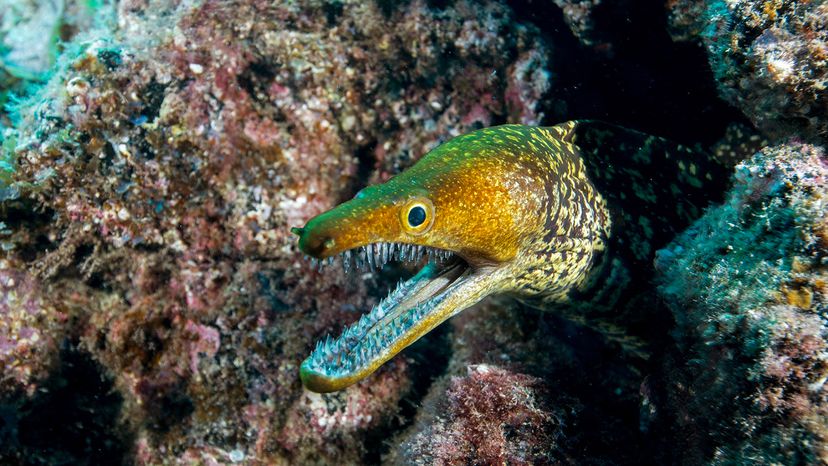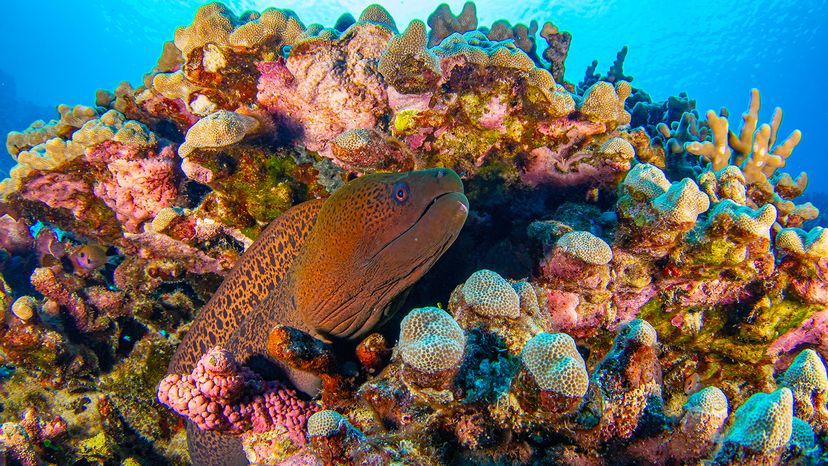
If you’ve ever peered into a crevice while scuba diving and spotted something snakelike with a wide grin and sharp teeth, chances are you’ve encountered a moray eel.
These long, slender fish slither through coral reefs and rocky shorelines across tropical and subtropical oceans. Known for their slippery bodies and powerful jaws, moray eels are both elusive and captivating.
Advertisement
They may look intimidating, but in reality most species prefer to lurk in rocky crevices and only emerge to hunt at night.
